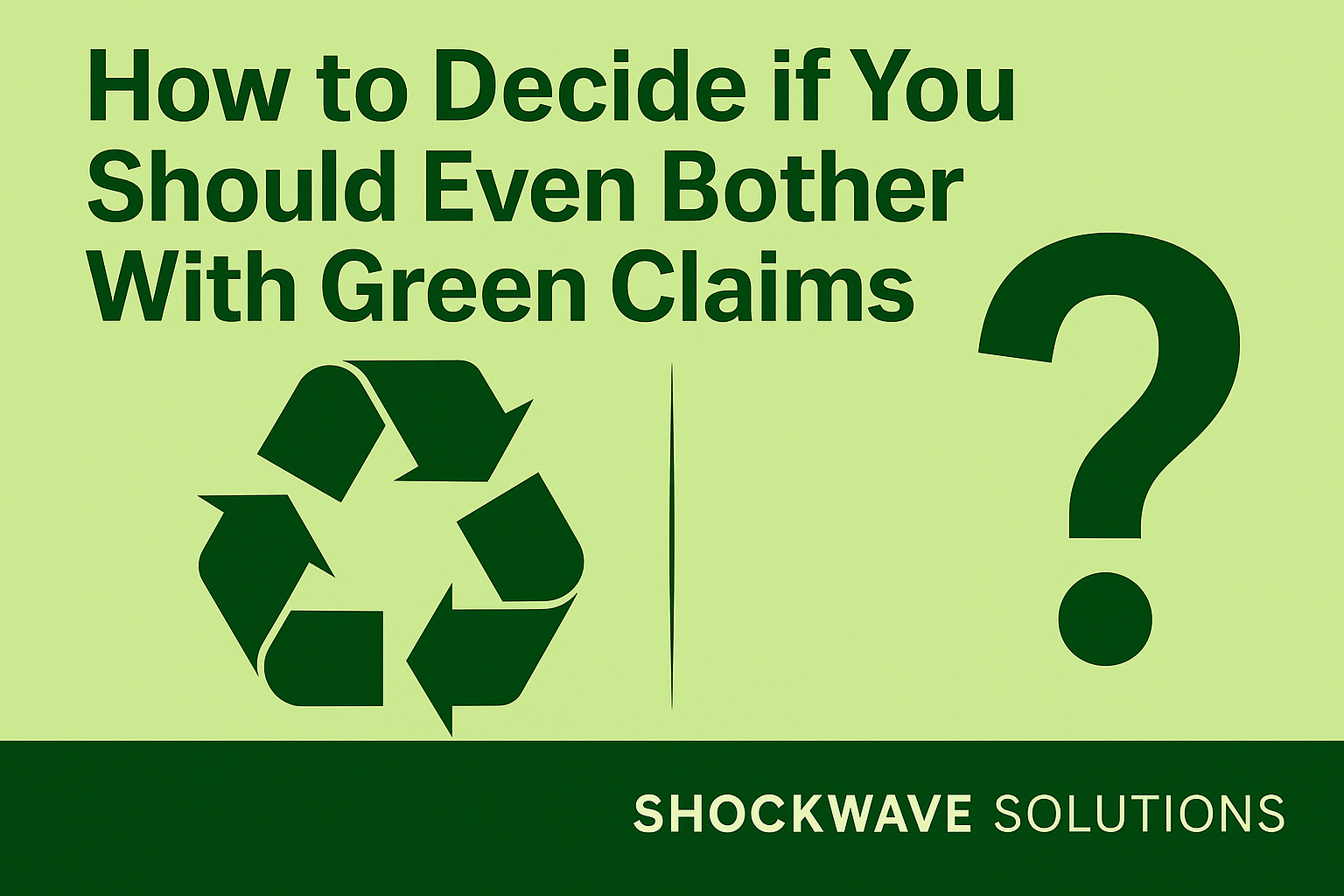Here’s the uncomfortable truth most marketers won’t say out loud:
Eco claims—”recyclable,” “sustainable,” “made from post-consumer materials”—are not only legally risky, but for 99.9% of brands… they don’t even help sales.
You’re not selling bamboo yoga mats to vegans in Portland.
You’re selling joint supplements to retirees. Or protein powder to 22-year-old gym rats. Or home goods to busy moms who care more about function than footnotes.
And unless your target market is actively buying based on sustainability… your green claim is doing nothing but putting your brand in the legal blast zone.
Let’s cut the noise and break down whether your brand should be making green claims at all.
The 3-Point Test: Should You Use Eco Claims?
Before you slap another recyclable logo on your packaging or type “eco-friendly” into your Amazon listing, run your brand through this brutal filter:
1. Does Your Buyer Actually Care?
Don’t guess. Look at your data:
- What keywords are converting?
- What benefits dominate customer reviews?
- Are customers even mentioning sustainability?
If “green” isn’t part of their buying decision, why are you leading with it?
Example: A DTC supplement brand tried testing “eco-friendly packaging” messaging. It tanked performance. Their customer base? 55+ women. They cared about pain relief, not polymers.
2. Does the Claim Justify the Legal and Operational Cost?
Let’s say your market does care. Great. Now ask:
- Can you back the claim with substantiation files?
- Can your manufacturer pass a compliance audit?
- Are you ready for California SB 343 and the upcoming FTC Green Guide updates?
If you can’t confidently check all three boxes, you’re walking into a legal buzzsaw for a few feel-good words.
3. Is It Core to the Brand Story or Just a Throwaway Line?
If your whole brand is built around sustainability (think: Blueland, Grove, or Patagonia), then yes – eco claims matter.
But if you’re just tossing it in to feel modern or “on trend,” stop. It’s not authentic, and regulators will sniff that out fast.
Reminder: Green claims are now seen as material to the purchasing decision. That means if it’s false or misleading, you’re open to class-action lawsuits.
Why Most Brands Should Kill the Eco Language
Here’s the punchline:
If it doesn’t drive conversions, it’s just a compliance liability.
Marketers love to dress up their copy with every buzzword possible:
- “Cruelty-free”
- “Biodegradable”
- “Made from recycled paper”
But if your customers aren’t buying because of those things, they don’t matter.
Worse? They create exposure:
- Liability under FTC false advertising rules
- State-level penalties (California is not messing around)
- Class-action risks if the claim can’t be substantiated
It’s like lighting your marketing on fire while standing in a pool of gasoline.
Green Doesn’t Sell? Prove It. (And If It Does, Use It Right.)
We’re not anti-green. We’re anti-BS.
If you think your customer base cares about eco claims, test it:
- A/B test landing page copy
- Run ads with and without eco claims
- Track sales lift and conversion rates
If there’s no measurable uplift, cut it.
If there is, then double down and do it the right way:
- Get ASTM or ISO certifications
- Use qualified claims (e.g., “30% post-consumer waste”)
- Build your substantiation binder
Otherwise, you’re just virtue-signaling your way into a lawsuit.
When It Does Make Sense to Use Eco Claims
There are a few clear cases where eco claims are not just acceptable—they’re strategic:
- Sustainability is core to your audience’s identity (Gen Z, millennial moms, ethical beauty consumers)
- You charge a premium and need justification for the price
- You sell in channels where eco standards are mandatory (like Whole Foods, certain EU markets)
- You have the budget and ops team to keep compliance airtight
If that’s you? Go for it.
Just make sure every claim you make can survive a courtroom.
Checklist: Should You Use Eco Claims?
Ask yourself:
- Do our customers mention or prioritize sustainability?
- Can we prove every eco claim with third-party data?
- Do our claims comply with California SB 343 and FTC Green Guides?
- Are we prepared for legal risk and public scrutiny?
- Does the claim directly support our brand promise or price point?
If you answer NO to 2 or more, kill the claim.
Simple.
Final Word: Compliance Is Not a Trend. It's Survival.
Eco claims aren’t soft features anymore. They’re legal commitments. And the cost of getting them wrong is way higher than the marketing value they bring to most brands.
So here’s the blunt rule:
If it doesn’t convert, and you can’t prove it, don’t say it.
Protect your brand. Respect your audience. And build marketing that sells without a green crutch.
P.S. We covered the legal firestorm behind green claims in this week’s podcast. Watch the full episode here:
and get the real strategy behind staying compliant and converting.
P.P.S. Want a done-for-you audit checklist? Grab it free in the Visionary Vault.

